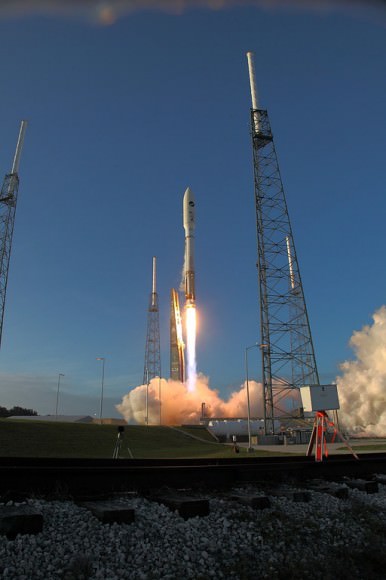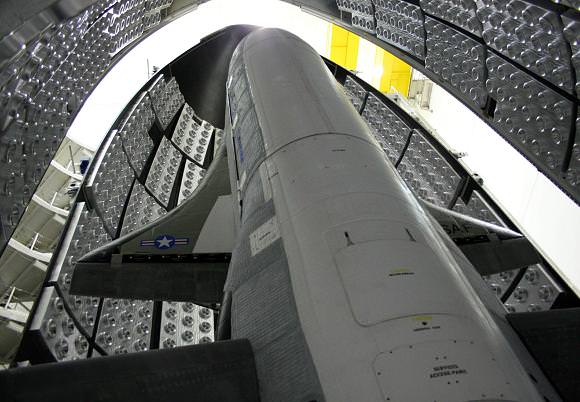Video provided courtesy of United Launch Alliance
The United States Air Force’s second flight of the X-37B – is headed into extra innings. Known as the Orbital Test Vehicle 2 (OTV-2) this robotic mini space shuttle launched from Cape Canaveral Air Force Station’s Space Launch Complex 41 (SLC-41) on Mar. 5, 2011. Although the U.S. Air Force has kept mum regarding details about the space plane’s mission – it has announced that the OTV-2 has exceeded its endurance limit of 270 days on orbit as of the end of November.
The OTV is launched atop a United Launch Alliance (ULA) Atlas V 501 rocket. The space plane is protected within a fairing until it reaches orbit. After separation, the diminutive shuttle begins its mission.
OTV mission USA-226, as it is officially known, is by all accounts going smoothly and the spacecraft is reported to be in good health. The U.S. Air Force has not announced when OTV-2 will be directed to land.
[/caption]
The fact that the space plane will continue to orbit beyond what its stated limits are highlights that the OTV has greater capabilities than what was officially announced. The first OTV flight launched in April of 2011 and landed 224 days later at Vandenberg Air Force Base in California. The U.S. Air Force is undoubtedly being more judicious with fuel stores on board the robotic spacecraft, allowing for a longer duration flight.
Much like NASA’s retired fleet of space shuttle orbiters, the OTV has a payload bay that allows for payloads and experiments to be conducted on-orbit. What payloads the U.S. Air Force has had on either mission – remains a secret.
Boeing has announced that the X-37B could be modified to conduct crewed missions to and from orbit. Tentatively named the X-37C, this spacecraft would be roughly twice the size of its unmanned cousin. If this variant goes into service it would be used to transport astronauts to and from the orbiting International Space Station (ISS).

The X-37B has become a bit controversial of late. Members of the Chinese press have stated that the space plane raises concerns of an arms race in space. Xinhua News Agency and China Daily have expressed concern that the OTVs could be used to deliver weapons to orbit. The Pentagon has flatly denied these allegations. The clandestine nature of these flights have led to a wide variety of theories as to what the OTVs have been used to ferry to orbit.

